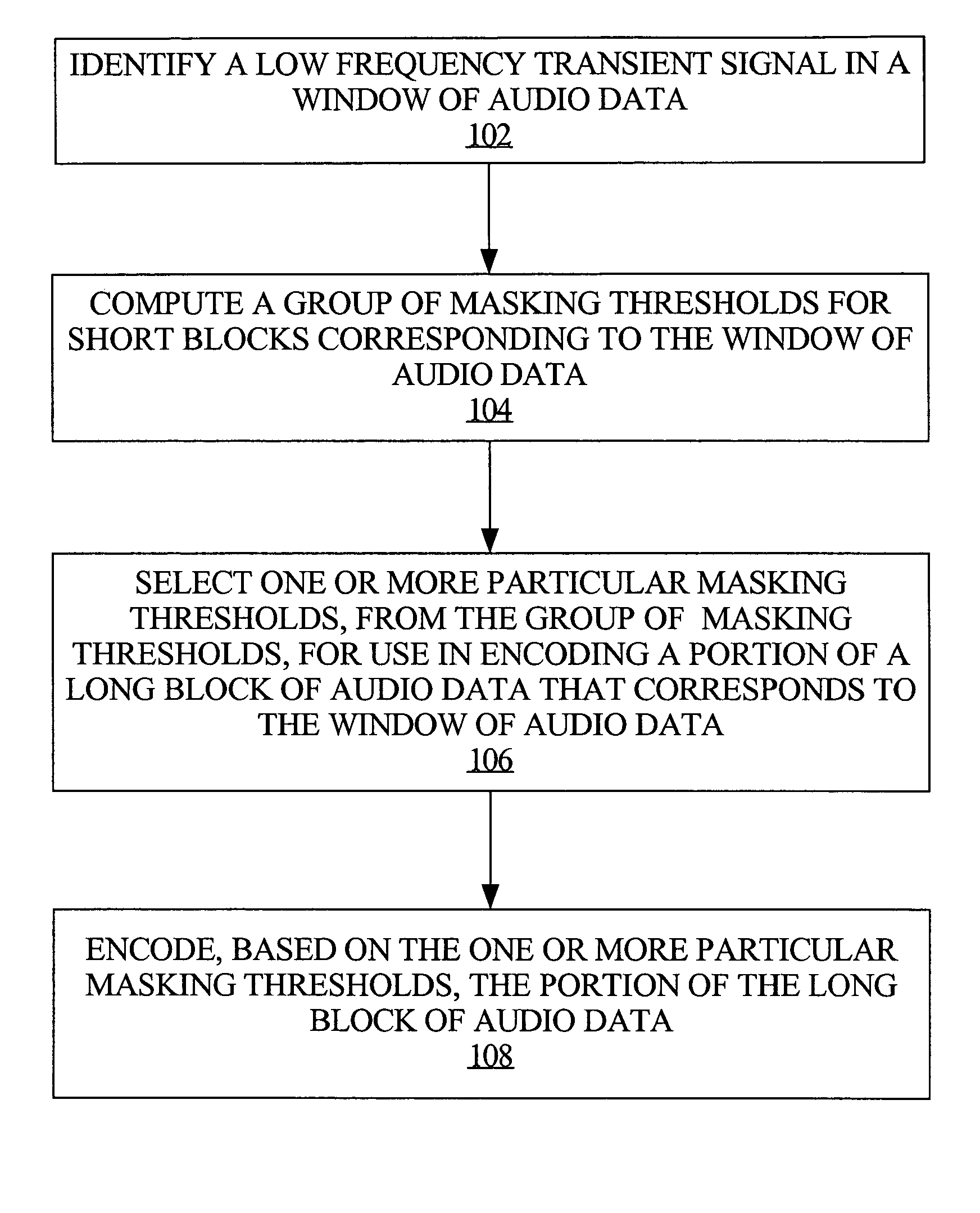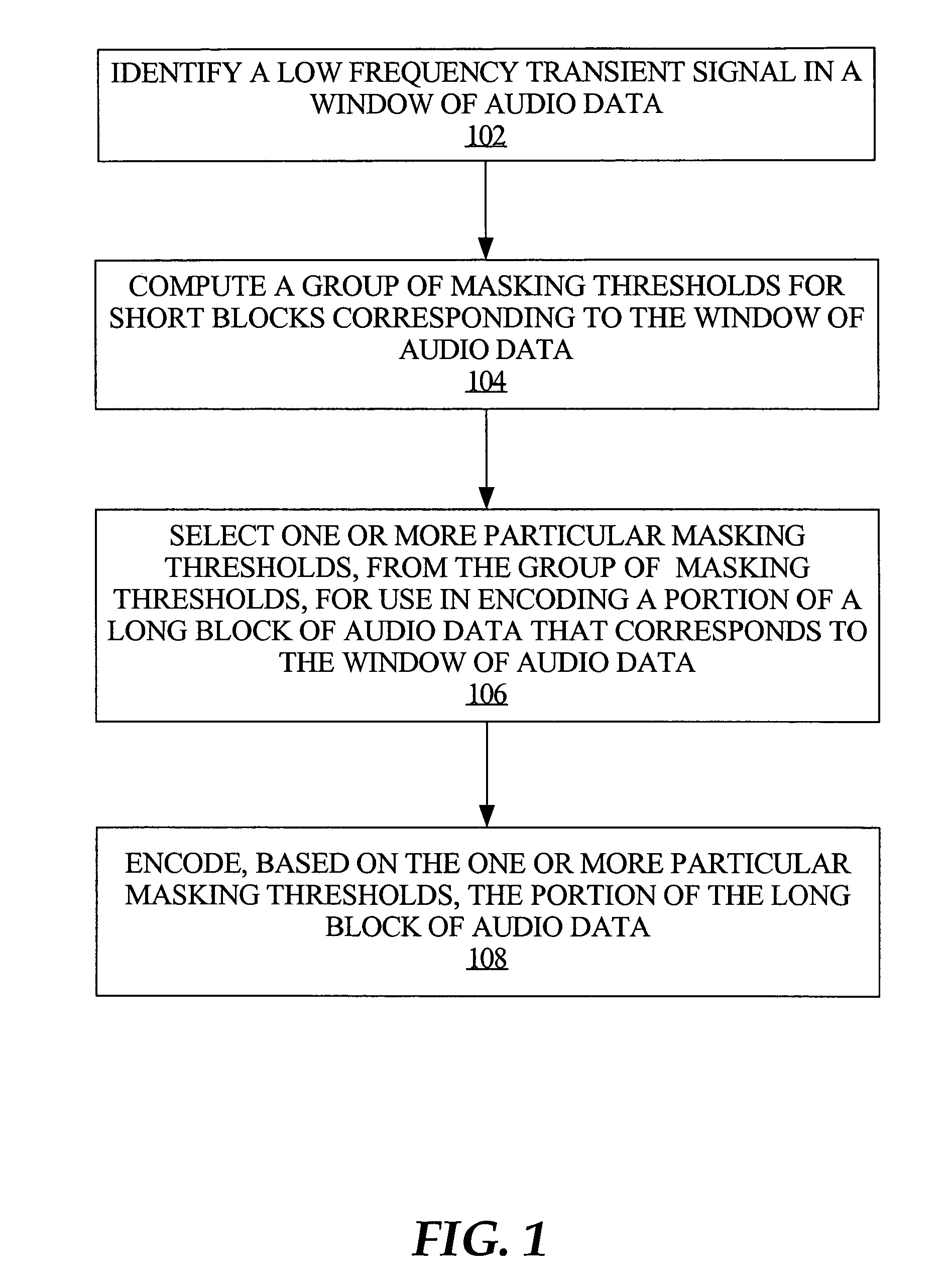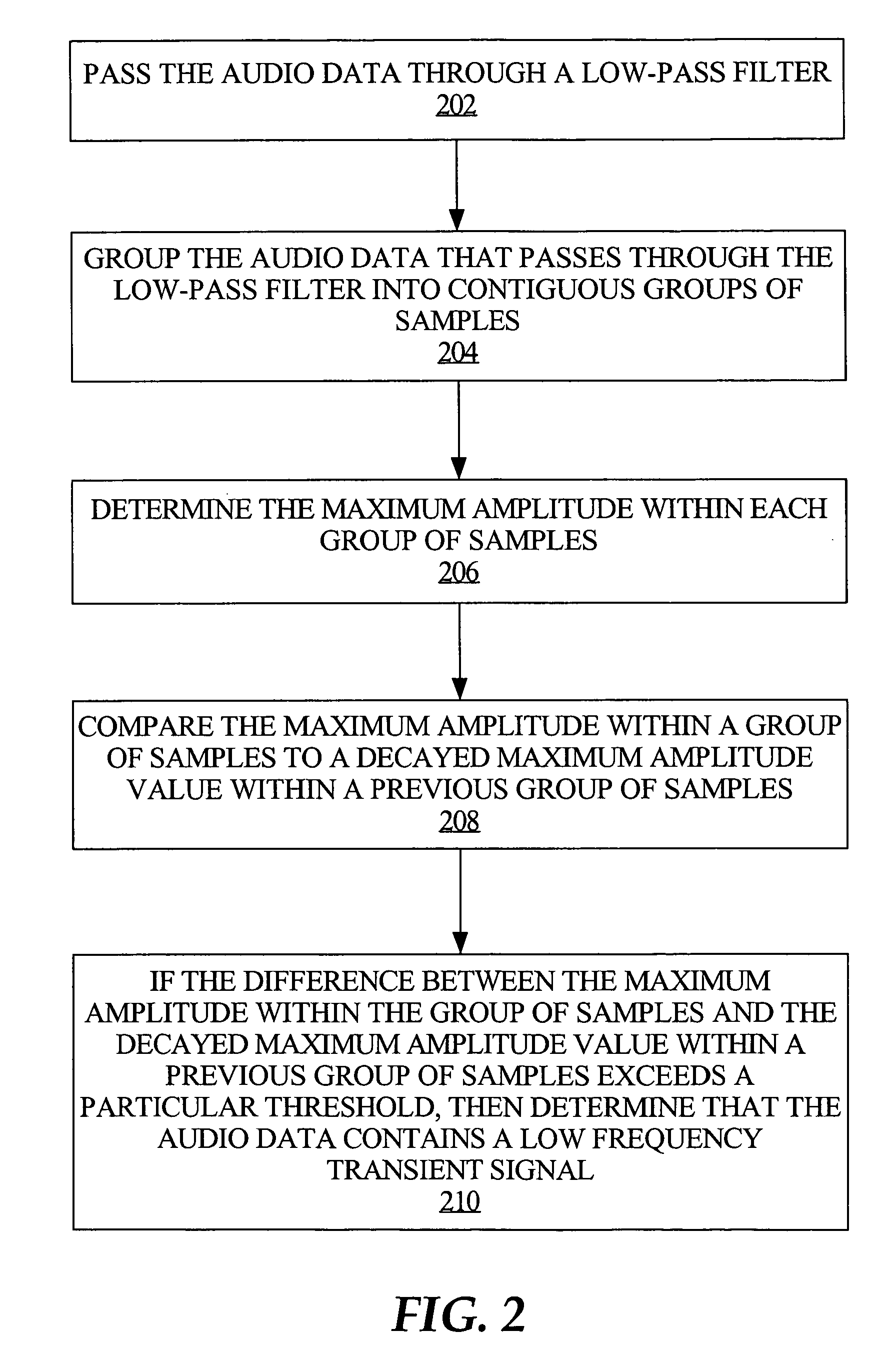Adapting masking thresholds for encoding a low frequency transient signal in audio data
a low frequency transient and audio data technology, applied in the field of digital audio processing, can solve the problems of pre-echo artifacts, noise above the level of original waveform, and human inability to hear noise, and achieve the effects of minimizing the spread of coder quantization noise, high frequency resolution, and high time resolution
- Summary
- Abstract
- Description
- Claims
- Application Information
AI Technical Summary
Benefits of technology
Problems solved by technology
Method used
Image
Examples
Embodiment Construction
[0017]An improved audio coding technique encodes audio having a low frequency transient signal using a long block, but with a set of adapted masking thresholds. Upon identifying an audio window (which typically corresponds to a long block) that contains a low frequency transient signal, in one embodiment of the invention, masking thresholds for the long block are calculated as usual. However, in addition, a set of masking thresholds calculated for the 8 short blocks corresponding to the long block are also calculated. The masking thresholds for the low frequency critical bands are adapted based on the thresholds calculated for the short blocks, and the resulting adapted masking thresholds are used to encode the long block of audio data. In one embodiment of the invention, the adapted masking threshold used to encode a particular critical band or bands of the long block of audio data is a masking threshold between the corresponding masking threshold computed for the long block and th...
PUM
 Login to View More
Login to View More Abstract
Description
Claims
Application Information
 Login to View More
Login to View More - R&D
- Intellectual Property
- Life Sciences
- Materials
- Tech Scout
- Unparalleled Data Quality
- Higher Quality Content
- 60% Fewer Hallucinations
Browse by: Latest US Patents, China's latest patents, Technical Efficacy Thesaurus, Application Domain, Technology Topic, Popular Technical Reports.
© 2025 PatSnap. All rights reserved.Legal|Privacy policy|Modern Slavery Act Transparency Statement|Sitemap|About US| Contact US: help@patsnap.com



